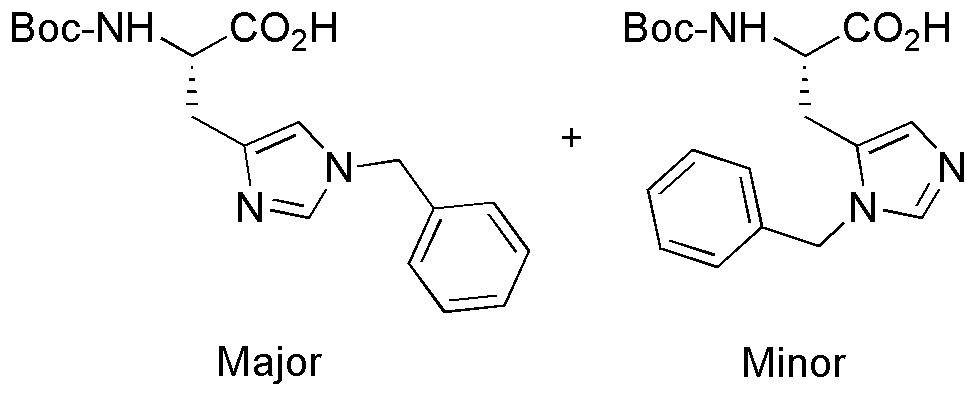Na-Boc-Nim-benzyl-L-histidine is widely utilized in research focused on:
- Peptide Synthesis: This compound serves as a key building block in the synthesis of peptides, particularly in the development of biologically active compounds and pharmaceuticals.
- Drug Development: Its unique structure allows for modifications that can enhance the efficacy and selectivity of drug candidates, making it valuable in medicinal chemistry.
- Bioconjugation: The compound is used in bioconjugation processes, where it helps attach biomolecules to therapeutic agents, improving targeted delivery in cancer therapies.
- Research in Enzyme Inhibition: It plays a role in studies aimed at understanding enzyme mechanisms, particularly in the context of designing inhibitors for various diseases.
- Protein Engineering: The compound is instrumental in protein engineering applications, providing researchers with tools to modify protein properties for enhanced stability and activity.
Informations générales
Propriétés
Sécurité et réglementation
Applications
Na-Boc-Nim-benzyl-L-histidine is widely utilized in research focused on:
- Peptide Synthesis: This compound serves as a key building block in the synthesis of peptides, particularly in the development of biologically active compounds and pharmaceuticals.
- Drug Development: Its unique structure allows for modifications that can enhance the efficacy and selectivity of drug candidates, making it valuable in medicinal chemistry.
- Bioconjugation: The compound is used in bioconjugation processes, where it helps attach biomolecules to therapeutic agents, improving targeted delivery in cancer therapies.
- Research in Enzyme Inhibition: It plays a role in studies aimed at understanding enzyme mechanisms, particularly in the context of designing inhibitors for various diseases.
- Protein Engineering: The compound is instrumental in protein engineering applications, providing researchers with tools to modify protein properties for enhanced stability and activity.
Documents
Fiches de données de sécurité (FDS)
La FDS fournit des informations de sécurité complètes sur la manipulation, le stockage et l’élimination du produit.
Spécifications du produit (PS)
Le PS fournit une description complète des propriétés du produit, notamment sa composition chimique, son état physique, sa pureté et les exigences de stockage. Il détaille également les plages de qualité acceptables et les applications prévues du produit.
Certificats d'analyse (COA)
Recherchez des certificats d'analyse (COA) en saisissant le numéro de lot du produit. Les numéros de lot et de lot se trouvent sur l'étiquette d'un produit, après les mots « Lot » ou « Lot de fabrication ».
Numéro de catalogue
Numéro de lot/série
Certificats d'origine (COO)
Ce certificat d'exploitation confirme le pays dans lequel le produit a été fabriqué, et détaille également les matériaux et composants utilisés et s'il est issu de sources naturelles, synthétiques ou autres sources spécifiques. Ce certificat peut être requis pour les douanes, le commerce et la conformité réglementaire.
Numéro de catalogue
Numéro de lot/série
Fiches de données de sécurité (FDS)
La FDS fournit des informations de sécurité complètes sur la manipulation, le stockage et l’élimination du produit.
DownloadSpécifications du produit (PS)
Le PS fournit une description complète des propriétés du produit, notamment sa composition chimique, son état physique, sa pureté et les exigences de stockage. Il détaille également les plages de qualité acceptables et les applications prévues du produit.
DownloadCertificats d'analyse (COA)
Recherchez des certificats d'analyse (COA) en saisissant le numéro de lot du produit. Les numéros de lot et de lot se trouvent sur l'étiquette d'un produit, après les mots « Lot » ou « Lot de fabrication ».
Numéro de catalogue
Numéro de lot/série
Certificats d'origine (COO)
Ce certificat d'exploitation confirme le pays dans lequel le produit a été fabriqué, et détaille également les matériaux et composants utilisés et s'il est issu de sources naturelles, synthétiques ou autres sources spécifiques. Ce certificat peut être requis pour les douanes, le commerce et la conformité réglementaire.

